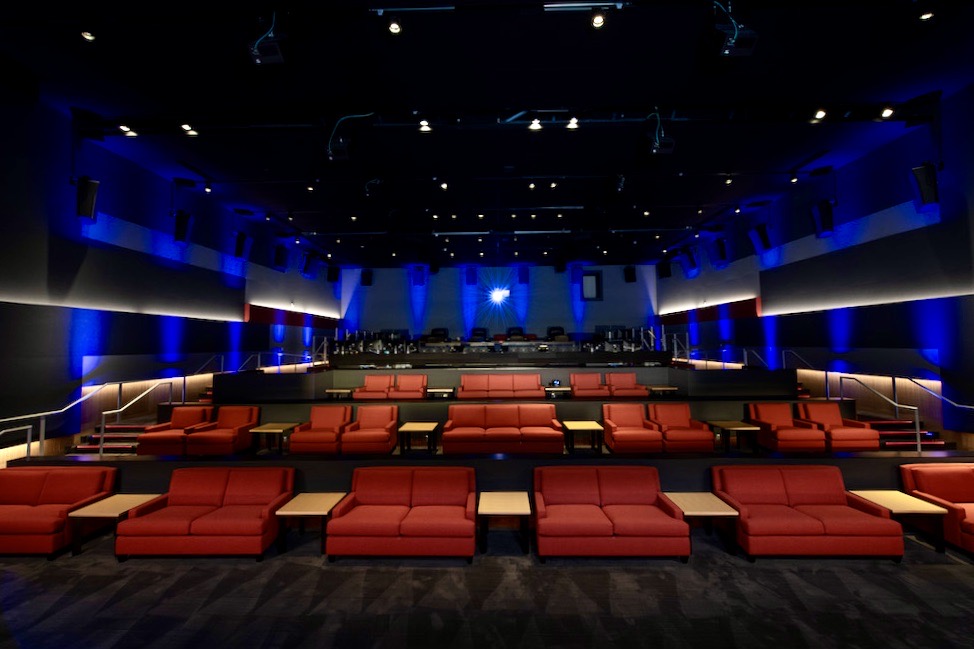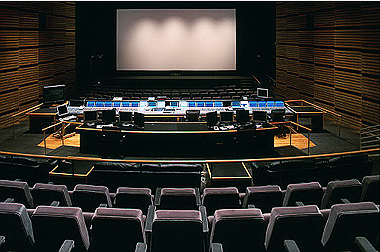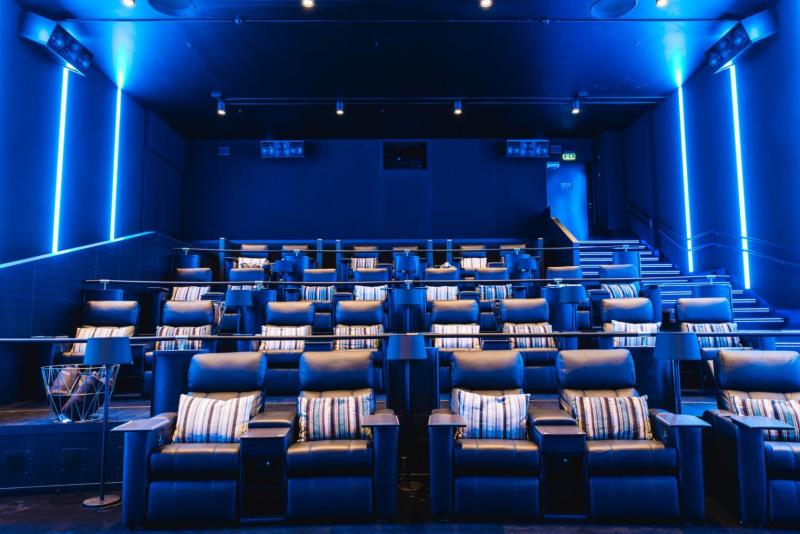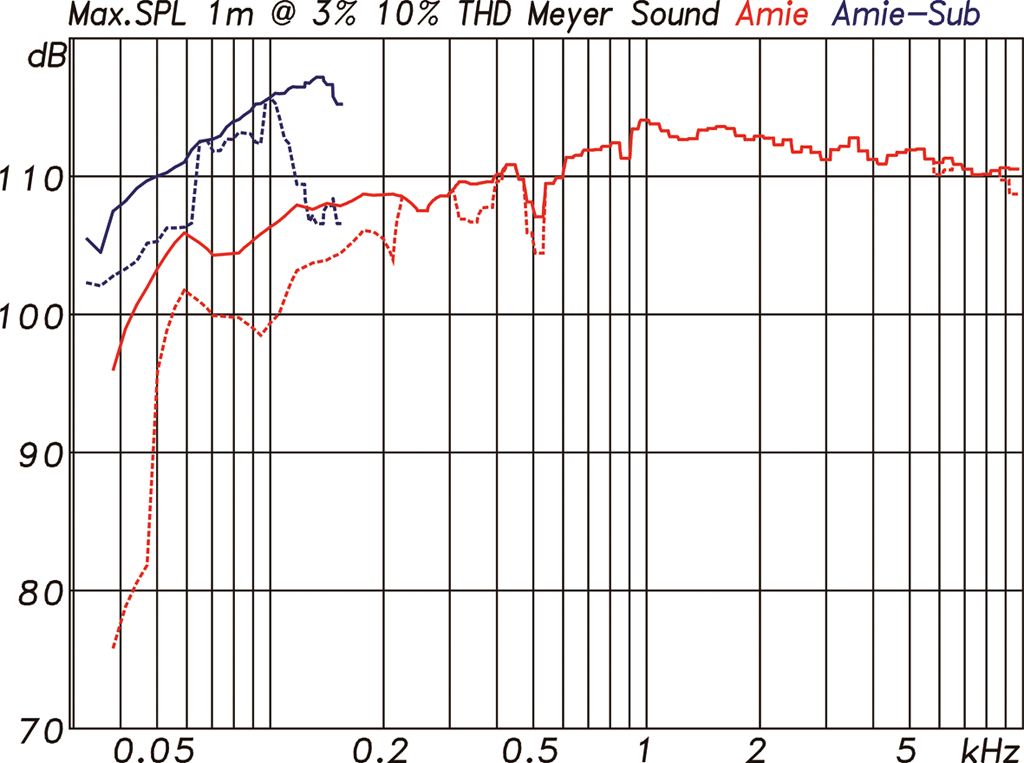Yes, these are already en route to @amirm for a formal spin on the Klippel NFS.
$8160/pair MSRP (Sept 2023)
Manufacturer's Website
Specifications
| Frequency Response | 45 Hz – 20 kHz ± 4 dB |
| Phase Response | 190 Hz – 20 kHz ± 45° |
| Linear Peak SPL | 120.5 dB with 18.5 dB crest factor (M-noise), 117.5 dB (Pink noise), 120 dB (B-noise) |
| Coverage | 80° horizontal x 50° vertical |
| LF transducer | 6.5-inch long-excursion cone driver; 4 Ω nominal impedance |
| HF transducer | 1-inch dome tweeter on a constant-directivity waveguide; 4 Ω nominal impedance |
| Amplifier | Two-channel Class-D Total output power: 900 W peak ; THD/IM/TIM <0.02% |
| Location of Manufacture | Berkeley, California, USA |
| Notes | Linear Peak SPL is measured in free-field at 4 m referred to 1 m. Loudspeaker SPL compression measured with M-noise at the onset of limiting, 2-hour duration, and 50 °C ambient temperature is <2 dB. Peak power based on the maximum unclipped peak voltage the amplifier will produce into the nominal load impedance. |
Background
Meyer Sound is one of the best-known names in the professional music industry. More than a historical “we were involved with the Grateful Dead’s Wall of Sound,” Meyer Sound is still responsible for powering the audio for touring artists like Ed Sheeran and Metallica, enabling the three-dimensional soundscape at Cirque de Soleil's Love and even enhancing the acoustic expertise at some of the world’s greatest concert halls without you even knowing it. They are considered one of the top three brands in this market.
In the cinema world, they are found at studios like FOX (pre-Disney) where they scored movies like Avatar: Way of the Water, Warner Brothers, Universal, and of course, Skywalker Sound, where the entire audio for Avatar: Way of the Water was put together along with many of today's blockbuster movies. At Skywalker Sound, while they do have B&W 801's in their scoring stage and larger Meyer Sound speakers in their large format theater rooms, the Amie was specifically made for them, and reportedly they use Meyer Sound Amie in all of their smaller "dubbing stages" as seen in this photo from Apple as well as in small offices seen in this YouTube video.
Skywalker Sound is famous for its affiliation with George Lucas, THX, and the whole Star Wars universe. Their role in sound design, mixing, and audio post-production go beyond Disney/Marvel/Lucasfilm with "rival studios" also using the creative talents at Skywalker Sound. Top Gun: Maverick? Jurassic World: Dominion? Sing 2? All Skywalker Sound. They have Academy Awards, Emmy Awards, and even a Grammy-winning classical album.
At least when it comes to movies, if we want to talk about the circle of confusion and wanting to replicate what the sound engineers intended, it seems like Meyer Sound is a compelling choice if you like mainstream movies.
Meyer Sound's Technical Expertise
It's easy to talk about technical expertise in flowery audiophile language, but what impressed me the most was their focus on measurements -- not just of a single speaker, but for entire systems and developing the software in-house. If you only have time to watch one video about Meyer Sound's approach to engineering, this is what you watch:
MAPP 3D does not have the Amie characterized yet, but the previous generation 2D MAPP XT does have the Amie which lets you create your room, place your speakers, and simulate the effect of how multiple speakers in-room interact with each other.
So, if I put a single Amie in a giant room and put a microphone 1 meter away. I can get this sound field and this theoretical frequency/phase response.
For my own in-room office, if I wanted to see what 2.5m away from a pair of Amie's, 2 meters apart, toe'd in 20 degrees, I'd get this:
But if I accidentally aimed one of the speakers incorrectly, I could end up with interference patterns
You can even assess the vertical response
Which tells me that if I'm sitting on a low sofa, I might end up with a little bump at 16 kHz...
While this doesn't account for room interactions, it does show more information than you normally get from typical audiophile brands. Each time you run the simulation, the curves are slightly different so it's not simply a looking up a pre-defined table. I'm not sure why it would be different unless there is a random number generator to capture the tolerances from unit-to-unit since the main goal for this is designing vertical arrays like this:
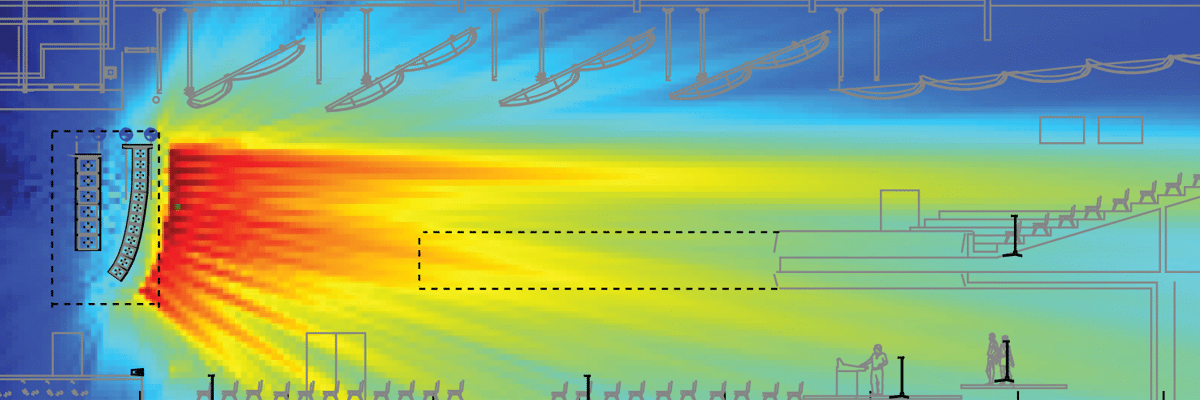
The white paper (attached PDF) explains some the additional design goals/philosophies for Amie. I have bolded the interesting parts
Since we were designing this monitor to create a sonic image similar to the image of Acheron loudspeakers, we needed to make sure that we avoided anything that would upset the projected stereo image. Small near field speakers have very wide coverage patterns and sit slightly above and on the back of the mixing desk. There is a lot of sound bouncing off the console’s surface, causing echoes which will alter the sonic image. HD‐1s are used to hear exactly what is on the recording, whereby the mix is sent to the horn-loaded 'mains’ speaker system to listen to the sonic image. Amie was designed for translation to the larger horn-loaded cinema sound system; however, since it would be used in rooms that have no other systems, it also needed to be sonically transparent. That is, it should sound as close as possible to the HD-1.
...
Amie’s horn was designed for an 80˚ horizontal coverage and a 50˚ vertical coverage. This narrow vertical coverage helps eliminate the sound bounce off the console surface above 1200 Hz. The high frequencies give us the most clues to the image that is created between the loudspeakers. This is a precision near field speaker intended for listening to fine detail in the sonic mix. Designed to work from one to two meters, it makes for greater flexibility in the setup. Although this speaker was designed for cinema mixing, we have found that it makes for an excellent near field monitor for music recording.
John Meyer also points out:
Using pink noise, each speaker would need to produce 96 dBc sound pressure level (SPL) continuously with 108 dBc peaks, with low distortion at the listening position. We will refer to this as the cinema spec. The near field monitors that we tested could only meet this specification at one meter. We would need 6 dB more output in order to meet the cinema specification at two meters.
...
Speakers measured in this paper: HD-1, Amie, Dynaudio BM6 mklll, Genelec 8040B.
The rest of the white paper focuses on impulse response and their approach to sound. It's good that they were benchmarking Genelec's but the 8040B is a much lower priced product.
My In-room Measurements
I didn't have time to play with MAPP XT or carefully set up my speakers since I wanted to send them off to Amir for testing. This was in my office, a little over 8 feet to the listening position. 96 dB is what REW reported as the level. I'm not sure how much the room is adding to the gain (it can be as high as 6 dB if the speakers are in corners) but this is still really loud when you convert it to the usual SPL at 1 meter instead of ~2.4 meters I was measuring at.
Subjective Impressions
We'll see if any of these pan out when Amir runs the measurements or if it's all sighted bias. I set up the Amie's before playing with MAPP XT and my configuration was a Marantz SA-10 and
Schiit Freya Noval.
1) Great soundstage depth and imaging that’s natural.
The phantom center image seems more diffuse than the JBL 708P but the speakers disappear in a different way that makes it feel like you're listening to a bigger room than you really are in. It's a really interesting phenomenon because the imaging is still very precise but it still sounds more like I'm in a well-treated large room. The 708Ps were very clean with ultra-precise stereo imaging, but it still had a near-field sound where I could hear that I was in my office. This could be all sighted bias, but there are plenty of hand-waving explanations ranging from linearity letting the various cues from volume, phase which isn't supposed to be audible for the most part, or something about the narrower dispersion making it harder for room cues to tell my brain where I'm listening because I was really hearing a reflections from something in my office. It basically feels like the speakers are further away than they are. As most Amie systems were intended for L-C-R systems rather than 2 channel systems, this phantom center effect may not be that important. Again, it's very subtle -- and may simply be speaker/height/position. Just sharing what I heard.
2) Sense of smoothness/warmth without any sweetening of the treble or sparkle.
It's very clean, and I have probably gotten accustomed to distortion with compression drivers and tube amps. I did feel as if the tube pre-amp mode of the Freya Noval could be used to add some distortion to the signal relative to passive mode, but it is hard to A/B compare them due to the differences in gain. A quick REW sweep between the passive pre-amp mode and tube mode showed very similar FR/distortion, but once I get the Amie's back from Amir, I'll definitely run some recordings through @pkane's DeltaWave to compare the two. I found the Focal Vestia's too subdued. My in-room does show a slight depression in the 4-9 kHz region which isn't present in the predicted FR, but that also may be decreasing sibliance. I would also describe the sound as calm because the treble sweetening effect of a tube amp is always a bit unexpected/exciting.
3) The self-noise seems to be quieter than the JBL 708P.
Hiss is audible with your ear right next to the tweeter. I don't see this being a problem even in a full Atmos setup but this is one area where control of gain could have an advantage. Unlike many other speakers in this class, there are no trim levels, gain options, or DIP switches for any sort of configurability. You get I/O for analog audio and I/O for AC power. There isn't even a power switch. As soon as you feed it AC power through the Neutrik PowerCon20 connector, it's on. It's very much an industrial tool. The heatsinks are warmer than room temperature, but at my listening levels, it was fine.
4) Excellent build quality.
I will see what Amir thinks. It's still Birch plywood as opposed to aluminum, but for the weight (which is light), the sound output is excellent! The pain feels nice and thing and doesn't absorb oil/sweat from your hand much.
Attachments
Last edited:

